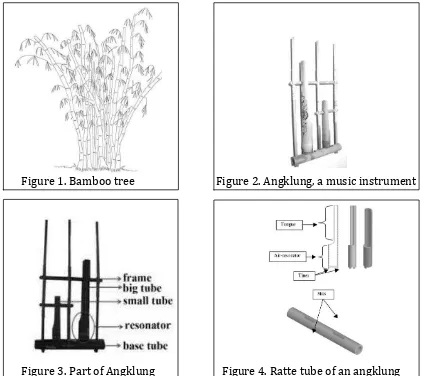允許學生個人 非營利性的圖書館或公立學校合理使用
本基金會網站所提供之各項試題及其解答
可直接下載
而不須申請
重版
系統地複製或大量重製這些資料的任何部分,必
須獲得財團法人臺北市九章數學教育基金會的授權許
可
申請此項授權請電郵
[email protected]
Notice:
Individual students, nonprofit libraries, or schools are
permitted to make fair use of the papers and its
solutions. Republication, systematic copying, or
multiple reproduction of any part of this material is
permitted only under license from the Chiuchang
Mathematics Foundation.
Requests for such permission should be made by
Page 1 of 10
THEORETICAL TEST II
(Write the answers to the following questions on the ANSWER SHEET)
1. (4 point) Look at the pictures of Indonesian primates below.
From the DNA data above, group the primates into several groups which have
closest relation and put the groups to complete the diagram on the answer sheet. (Orangutan) (Long-nosed monkey) (Javan gibbon)
(Siamang) (Slow loris) (Lutung) (Tarsier)
Notes:
A: Orangutan
B: Long-nosed monkey
C: Javan gibbon
D: Siamang
E: Slow loris
F: Lutung
G: Tarsier
Page 2 of 10
2. Look at the pictures below.
Based on the picture above, there are two species of ladybug. The ratio between
species M and species W per m2 is 4 to 1. Species W does not have resistance gene on
their DNA, while species M has resistance gene on their DNA. These insects typically
have a lifecycle of a few days to a few weeks.
Questions:
a. (1 point) What will happen if ABC insecticide is used in a long period to those
insect population?
b. (2 point) How should we use insecticide to prevent the resistance effect?
c. (1 point) After the ABC insecticide usage was banned and people never use
insecticide, predict the ratio of two ladybug species.
d. (3 point) Draw a pattern of the amount of two species population before and
during the use of insecticide, and also after it was banned in the diagram on the
ANSWER SHEET.
3. The picture below shows a section through a type of epithelium in the respiratory
system.
a. (2 point) Where is this type of epithelium found?
(fill in the box on the ANSWER SHEET)
b. (2 point) What is the function of cilia on the epithelium in the respiratory system?
“
A
BC”
“
A
BC”
Species MPage 3 of 10
4. Look at the pictures below.
a. (1.5 point) From the pictures above, classify the plants based on the tables on the
ANSWER SHEET.
b. (0.5 point) Mention one of the insectivorous plants that can be found in Indonesia.
c. (3 point) What factors have caused insects to be attracted to the trap of
insectivorous plants?
d. (2 point) Why does insectivorous plant trap insect and digest it?
P Q R
Page 4 of 10
5. The diagram below shows the nitrogen cycle in nature. The numbers in the diagram
represent each process of the nitrogen cycle.
a. (1 point) What number from the diagram above shows a process that gives
disadvantages to the plant?
b. (1 point) Based on the diagram, what will happen if process in number 5 does not
occur?
c. (1 point) What is the name of root modification in legumes plant which bind with
nitrogen?
6. The diagram below shows a roller coaster track
a. (1 point) How much is the potential energy of the lorry at point B ?
b. (1 point) How much is the speed of lorry at point C?
c. (2 point) Draw a graph of potential energy related to distance from A to C on the
Page 5 of 10
7. The diagram below shows a hydraulic pump
a. (1 point) How much is pressure on the right piston?
b. (1 point) How much is the force (F2) resulted on the left side?
c. (1 point) How many centimeters does the left piston move if the right piston is
pushed 30 cm downward?
8. The diagram below presents an experiment conducted by a student to measure
density of a stone
a. (1 point) How much is the volume of the stone?
b. (1 point) How is the density of the stone?
c. (2 point) How much is the mass of the measuring cylinder if the mass of stone is
Page 6 of 10
9. The figure shows a bar magnet surrounded by compass needles which are located in
the following numbers.
a. (0.8 point) Draw a sketch indicating the direction of the needles at each location.
b. (1.2 point) Why does it happen?
c. (1 point) What will happen when the bar magnet is removed? Explain your
answer.
10. Ultrasonic wave propagates at 1480 m/s. One of the benefits from ultrasonic waves
is to measure the depth of the sea by using the reflectance properties.
a. (1 point) What is the frequency of the wave if the ultrasonic wavelength is
0.04m?
b. (1 point) How much time does ultrasonic wave take to measure ocean depth
3330 m?
c. (2 point) The table below records time required by ultrasonic wave to
propagate from transmitter to the sea floor and back again to the transmitter.
Location A B C D E F G H
Time (s) 1 2 2,5 5 3 6 4 2
Page 7 of 10
11.
ANGKLUNG: A MUSICAL INSTRUMENT MADE OF BAMBOO
Bamboo is a monocot plants in the grass family Poaceae (Figure 1). Bamboo
species are found in diverse climates, from cold mountains to hot tropical regions.
They distribute across Asia, Africa, Australia and America.
Bamboos are of notable economic and cultural significance in South Asia,
Southeast Asia and East Asia, being used for building materials, as a food source, as a
versatile raw product and also music instrument. Angklung is a musical instrument
from the West Java, Indonesia made of two to four bamboo tubes attached to a
bamboo frame (Figure 2, 3 and 4). The tubes are carved to have a resonant pitch
when struck and are tuned to octaves. The sound of angklung is produced from
collision of the base tubes. The sound is amplified by resonantor on each tube.
Figure 1. Bamboo tree Figure 2. Angklung, a music instrument
Page 8 of 10
Playing angklung as an orchestra requires cooperation and coordination, and is
believed promotes the values of teamwork, mutual respect and social harmony
(Figure 5).
On November 18, 2010, UNESCO officially recognized Indonesian "angklung" as a
Masterpiece of Oral and Intangible Heritage of Humanity. (Source:
www.wikipedia.org)
Figure 5. Angklung orchestra
QUESTIONS:
a. (2.5 points) State whether the statements below is TRUE or FALSE.
Statements TRUE or FALSE
Bamboo can reproduce through vegetative
Bamboo is classified as non-flowering plant
Bamboo has no branches
Figure 1 shows the population of bamboo
trees
Bamboo can be cultivated from seed
b. (1 point) What is resonance?
c. (1 point) What is the type of wave produced by angklung sound?
d. (1 point) A kind of angklung can produce 660 Hz sound. What is the wavelength if
Page 9 of 10
e. (1 point) Three angklungs produce different sound waves as shown below.
Rank the angklung produced from the lowest frequency to the highest?
f. (2 points) Explain the relation between wavelength and frequency?
12. The dye-sensitized solar cell (DSSC) is a new type of solar cell which converts the
visible light into electricity based on photosynthesis principle.
Figure 6. The schematic of DSSC works principle
The figure ilustrates the DSSC work principles. The DSSC uses dyes or natural
pigments to capture light energy. This energy excites electrons which can then flow
toward the electrode.
Scientists use synthetic dyes and natural pigments like anthocyanins.
Anthocyanins are a class of pigments found in many berries and other plants.
Page 10 of 10 QUESTIONS:
a. (1 point) How is the working principle of dye sensitized solar cell?
b. (1.5 point) Write down the steps of energy convertion from the sun light-DSSC-lamp.
c. (2 point) Figure 7 shows the ultraviolet-visible (UV-Vis) spectrum of mulberry
pigment with different concentrations. What can be concluded from the UV-Vis
spectrum of mulberry pigment with different concentrations.
Figure 7. The UV-Vis spectrum of mulberry pigment
d. (2.5 points) State whether the statement is TRUE or FALSE.
Statements TRUE or FALSE
Anthocyanin is one of photosynthetic pigments
Anthocyanin can express more than one color
Chlorophyll can be used as insect attractant in pollination
Anthocyanin can be found in plastids
Chlorophyll can help plant to produce organic molecule

